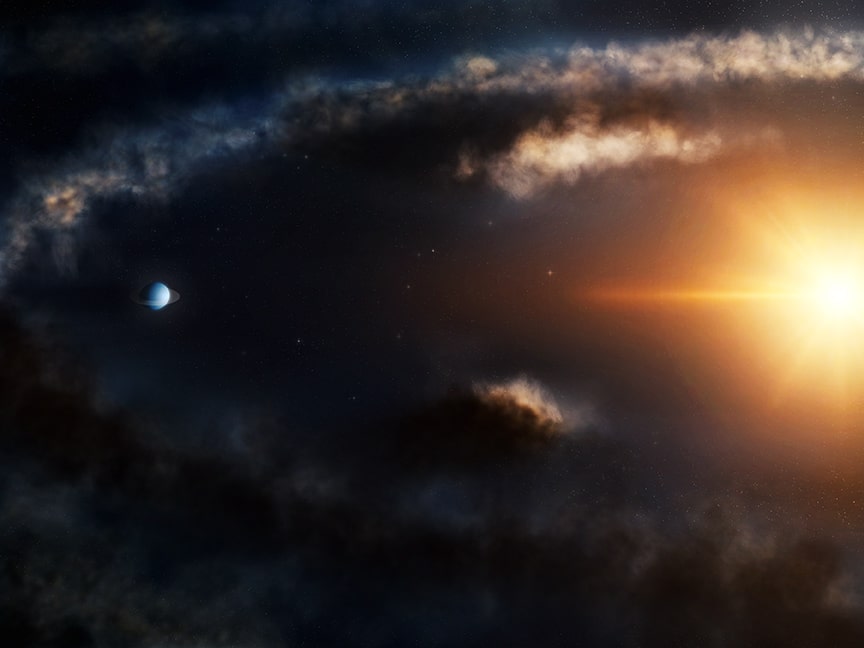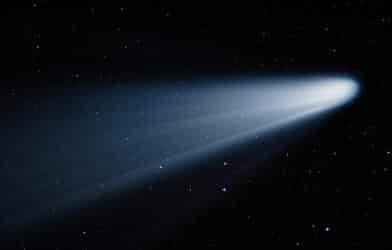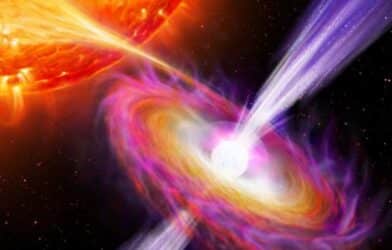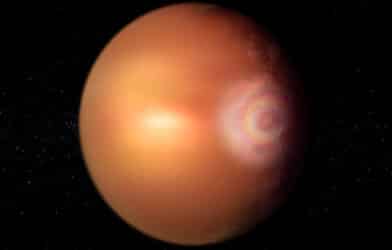Dr. Feng Long, a postdoctoral fellow at the Center of Astrophysics, is watching a different kind of baby being born in a galactic kind of “hospital.” That’s because Long and colleagues at the Center for Astrophysics at Harvard & Smithsonian have been observing one particular infant planet hidden behind a disc of gas, and they’re blown away by what it can teach us about how planets form.
Dr. Long led the study which found LkCa 15, this new star being born. That’s not such an easy task when these new planets like to hide.
“Directly detecting young planets is very challenging and has so far only been successful in one or two cases,” Dr. Long explains. “The planets are always too faint for us to see because they’re embedded in thick layers of gas and dust.”
Studying LkCa 15, she and the team uncovered two features previously unrecorded or found. This protoplanetary disk is located in the Taurus constellation and the dusty ring hides two things. About 42 AU (astrological units — how far our Earth is from the sun in length) from LkCa 15 are two arcing clumps of dust that sit in a particular situation.
Planets forming is as titillating to scientists as finding planets with water or oxygen. Using the ALMA Observatory, the giant installation in Chile with its sweeping array of sensors, she and her team could learn a little about their new baby. Unfortunately, it’s 518 light years away, so we can’t exactly hold it yet.
But, that didn’t dissuade the team. Scientists used high-resolution ALMA observations taken with Band 6 (1.3mm) and Band 7 (0.88mm) receivers.
“In the past few years, we’ve seen many structures pop up on disks that we think are caused by a planet’s presence, but it could be caused by something else, too” Long says. “We need new techniques to look at and support that a planet is there. This arc and clump are separated by about 120 degrees. That degree of separation doesn’t just happen — it’s important mathematically.”
Dr. Long is sure that this is the beginning of something new. Math never lies, so they say, and it’s a language of its own that planets can only speak to us in. (Outside of spacial audio translated from frequency transmissions.)
“We’re seeing that this material is not just floating around freely, it’s stable and has a preference where it wants to be located based on physics and the objects involved,” Long explains.
The gaseous and dusty material Dr. Long detected is located at the L4 and L5 Lagrange points. Tucked away perfectly 60 degrees between them is a small planet accumulating dust at these points. It looks roughly like Saturn or Neptune and is around one to three million years old. (That’s young for planets.)
But getting an actual picture of the planet itself? That’s still out of reach for astronomers, who are limited by technology constraints. It’s possible that we might be able to capture an image in the future, but right now it’s still more than likely that we’ll have to rely on indirect methods like analyzing gaseous material.
The study is published in the The Astrophysical Journal Letters.








-392x250.png)



